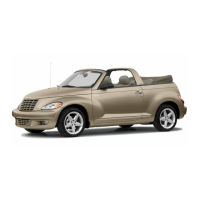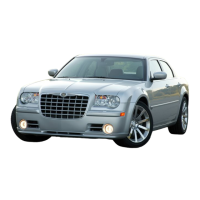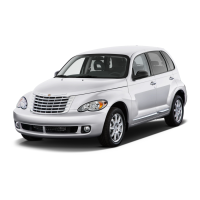Do you have a question about the Chrysler 2006 PT Cruiser Convertible and is the answer not in the manual?
Explains how to navigate and use the manual's sections and index.
Details warnings against unsafe operating procedures and cautions for vehicle damage.
Warns about the risks of modifying the vehicle's roadworthiness and safety.
Advises on obtaining and keeping key code numbers from the dealer for duplicate keys.
Describes how to lock and unlock vehicle doors using the key.
Explains the signal that reminds the driver to remove the key from the ignition.
Details the Sentry Key Immobilizer System and its operation to prevent unauthorized use.
Explains how to obtain and program replacement Sentry Keys and the required PIN number.
Provides a step-by-step procedure to program new Sentry Keys to the system.
Explains how the passive steering wheel lock works and how to engage/release it.
Explains the use of the manual door lock plunger to lock doors from inside.
Explains the operation of the door lock switch on each front door panel.
Describes the child-protection lock system for rear doors to enhance child safety.
Explains the system for locking/unlocking doors and activating the panic alarm remotely.
Provides instructions and recommendations for replacing the battery in the key fob transmitter.
Explains the remote keyless entry system for convertible models.
Describes the panic alarm mode, its activation, and duration.
Explains how the security alarm system monitors the vehicle for unauthorized operation.
Details how to lock, unlock, and open the liftgate on sedan models.
Details how to open the deck lid on convertible models.
Provides critical safety information regarding children in the liftgate area and the release lever.
Provides critical safety information regarding children in the trunk and the release lever.
Describes the location and operation of power window switches.
Explains the auto down feature for front power window switches.
Introduces restraint systems like seat belts and airbags for occupant safety.
Details the use and importance of lap/shoulder belts for all occupants.
Provides step-by-step instructions for operating lap/shoulder belts.
Details the BeltAlert system that reminds occupants to buckle their seat belts.
Introduces the SRS airbag system as a supplement to seat belts.
Covers the operation of the vehicle's convertible top.
Introduces the UConnect™ hands-free communication system.
Introduces the topic of mirrors.
Introduces the section on vehicle seats.
Explains how to adjust the front seats using the manual adjusting bar.
Identifies and labels the various features of the instrument panel.
Provides detailed descriptions of each instrument cluster gauge and indicator.
Details the features and functions of the EVIC display.
Details how to set the analog clock on the instrument panel.
Provides general procedures for starting the vehicle.
Offers steps to take if the engine fails to start, including dealing with a flooded engine.
Explains the need for turbocharger cool down and provides a chart for idle times.
Details the operation and precautions for automatic transaxles.
Introduces the Autostick driver-interactive transmission for manual gear shifting.
Explains the location and operation of the hazard warning flasher switch.
Provides actions to take when the engine overheats.
Covers the procedures and safety precautions for jacking and changing tires.
Provides detailed procedures and safety warnings for jump-starting a vehicle with a low battery.
Provides safety advice for driving on slippery surfaces like snow, ice, or wet roads.
Explains how to free a stuck vehicle using a rocking motion and turning off traction control.
Covers procedures for towing a disabled vehicle.
Identifies components in the 2.4L Turbo engine compartment.
Identifies components in the 2.4L engine compartment.
Explains the OBD II system and the Malfunction Indicator Light.
Introduces the engine oil section.
Provides instructions on how to check the engine oil level accurately.
Explains how to check drive belts for condition, tension, and proper routing.
Introduces the cooling system and its maintenance.
Details how to check coolant protection, level, and inspect for leaks.
Emphasizes timely maintenance for proper functioning of the emission control system.
Introduces the three maintenance schedules for vehicle service.
Details maintenance requirements for vehicles operated under severe conditions.
Offers advice on how to prepare for and obtain service for the vehicle.
States the manufacturer's commitment to customer satisfaction and service quality.
Refers to the Warranty Information Booklet for applicable warranty terms.
Explains how to report vehicle safety defects to NHTSA and Transport Canada.
Explains the DOT uniform tire quality grading system.
| Brand | Chrysler |
|---|---|
| Model | 2006 PT Cruiser Convertible |
| Category | Automobile |
| Language | English |












